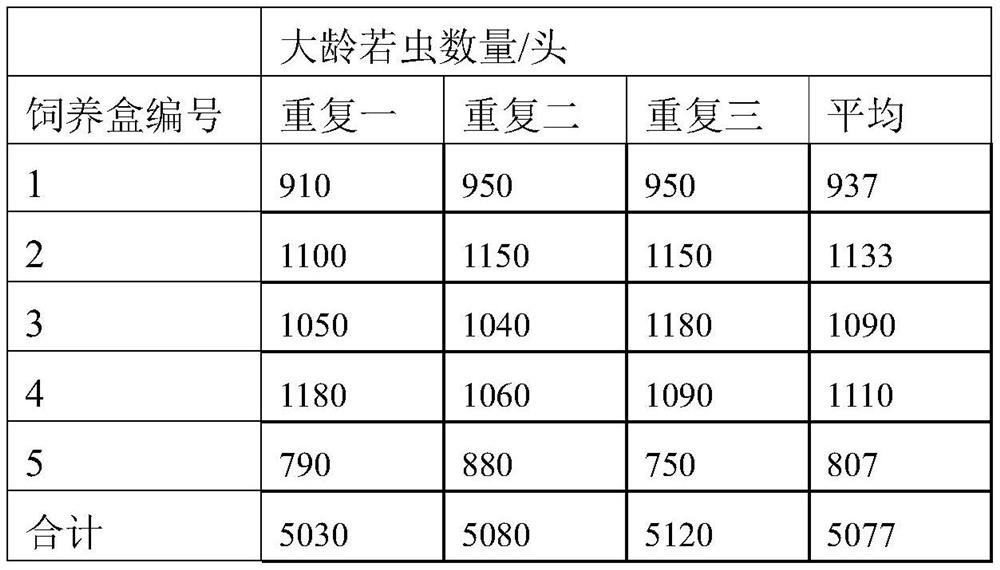Breeding method of nesidiocoris undulatus
A technology of tobacco stink bug and sesame, applied in animal husbandry and other directions, can solve the problems of scale powder loss, respiratory health hazards of workers, and long development period of rice moths, etc., and achieves the effect of reducing production cost and high female egg production.
- Summary
- Abstract
- Description
- Claims
- Application Information
AI Technical Summary
Problems solved by technology
Method used
Image
Examples
Embodiment 1
[0055] Example 1. Comparison of the developmental duration, survival rate and male-to-female ratio of Lygus burgdorferi raised on the eggs of peach aphid and rice moth.
[0056] Test method: the newly hatched 1st instar nymphs of Lygus burgdorferi were reared in a 200ml feeding box, and each feeding box provided about 30 peach aphids or 1 piece of paper (about 1000 grains) full of rice moth eggs. egg), providing a segment of the sesame stalk, the bottom of the sesame stalk is wrapped with wet cotton. The survival and age of nymphs were recorded every day until they emerged into adults, and finally the sex of the emerged adults was recorded. Prey and plant materials were replaced every 3 days. Each treatment had 40 repetitions, and the developmental duration, survival rate and sex of Lygus burgdorferi were counted.
[0057] test results:
[0058] Table I:
[0059]
[0060] The data showed that the growth and development of Lygus burgdorferi can be completed by raising Lyg...
Embodiment 2
[0061] Embodiment 2, raising Lygus burgdorferi with sesame and peach aphid production test
[0062] experiment method:
[0063] Oviposition: First introduce about 400 newly emerged adults of Lygus burgdorferi into the egg-laying cage (the ratio of male to female is about 1:1), then put a box of sesame seedlings inoculated with Myzus persicae, and wait for the birth of Lygus burgdorferi. egg. In the morning after five days, use a bamboo stick to gently scratch the sesame seedlings to drive away the adults of Lygus burgdorferi on the sesame seedlings, and then take out the sesame seedlings that have laid eggs from the egg-laying cage. After taking out, introduce 1 box of new sesame seedlings that have been inoculated with peach aphid in the egg-laying cage. This batch of adults can be used for 5 boxes of sesame seedlings to lay eggs. The spawning process was carried out in the rearing room of Lygus burgdorferi. The environmental parameters of the breeding room of Lygus tabac...
PUM
 Login to View More
Login to View More Abstract
Description
Claims
Application Information
 Login to View More
Login to View More - R&D
- Intellectual Property
- Life Sciences
- Materials
- Tech Scout
- Unparalleled Data Quality
- Higher Quality Content
- 60% Fewer Hallucinations
Browse by: Latest US Patents, China's latest patents, Technical Efficacy Thesaurus, Application Domain, Technology Topic, Popular Technical Reports.
© 2025 PatSnap. All rights reserved.Legal|Privacy policy|Modern Slavery Act Transparency Statement|Sitemap|About US| Contact US: help@patsnap.com



